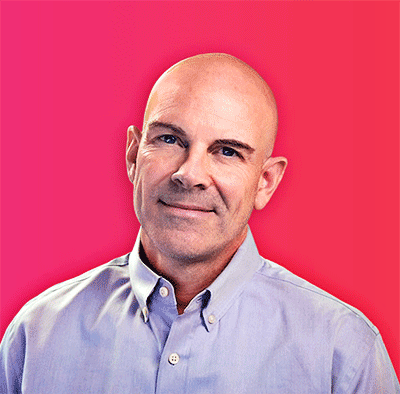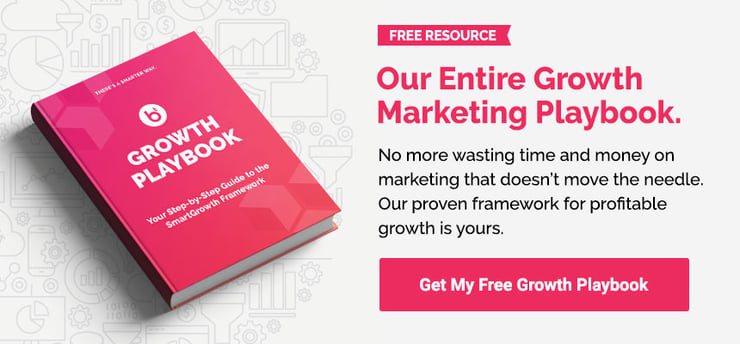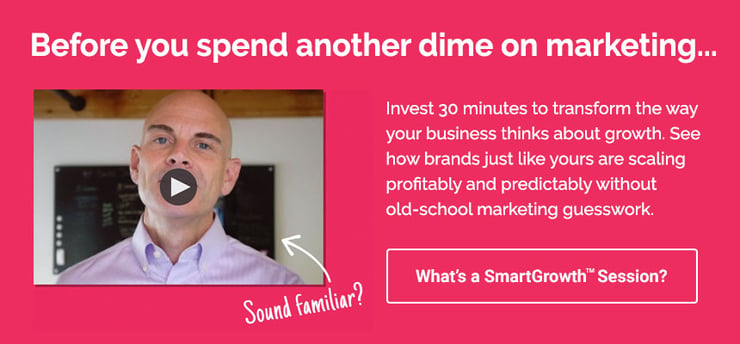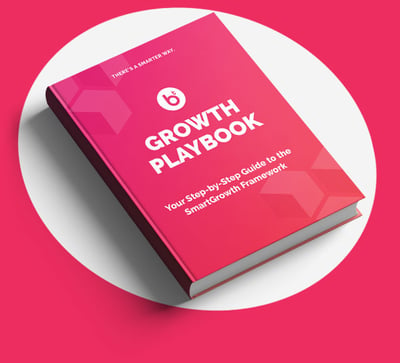Fast, sustainable revenue capture is critical for B2B SaaS growth, and for gaining investors’ attention. Eliminating delays from your SaaS sales cycle improves cash flow, giving you the fuel you need to continue growing. A shortened sales cycle also shortens the time you have to wait to get the data you need to make improvements and scale efficiently.
In this article, you’ll learn how to identify and eliminate the snags in your sales cycle and keep your buyer’s (and your SaaS) moving.
What does the typical SaaS sales cycle look like?
Your sales cycle will share common characteristics with other SaaS companies, but won’t be exactly like anyone else’s. Why? Your SaaS sales cycle is the product of your unique business model, ideal buyer, and its marketing and sales strategies.
In general, though, a growth-focused SaaS sales cycle moves a prospect or buyer through the following stages:
1. Awareness
Before someone becomes your customer, they have to know you exist. Both inbound and outbound activities contribute to raising awareness. As a product of the digital world, most SaaS companies use a website as their primary funnel entry point. Some SaaS companies focus on paid marketing to introduce strangers to their brand and guide them to a customer-centric website. Others employ SDRs or BDRs, or use personal networking by the founder and other team members to get the word out.
2. Acquisition
Someone who knows about your SaaS and is known to your SaaS is at the Acquisition stage in your sales cycle or customer acquisition funnel. But neither you nor the prospect know enough about one another to decide if your solution is a match for their problem yet. You may recognize these prospects by the common categorization of marketing qualified lead (MQL).
Your company probably tracks MQLs by adding them to a CRM or other data management system after the lead has filled out a contact form, downloaded a lead magnet, or communicated with someone in your organization. You and the lead still need to get to know each other better to progress to the next stage.
3. Activation
The Activation stage is where your online and offline marketing content, sales collateral and sales team engage with a lead to gain a commitment. Activation stage buyers may become customers, but they aren’t always paying customers.
For many SaaS products, an easy route to Activation is to offer a free trial or a freemium version of the product. This places your solution in the hands of your potential customers and lets them experience its benefits first-hand. Of course, if your SaaS is an enterprise solution that takes weeks or months to rollout for a new user, a trial may not be a viable option. For these SaaS organizations, Activation may span multiple conversations and stakeholder presentations.
Regardless of the costs of acquisition, keeping them low is an important part of a growth-focused customer acquisition strategy. Ideally, your efforts at this stage are expended only on leads that have real potential to convert.
Genuine sales qualified leads (SQLs) are those who are ready, willing and able to purchase your SaaS solution. B2B SQLs may represent a buying group instead of a single individual. Which can make determining if the decision-makers meet the ready-willing-able criteria a challenge. Using lead scoring tools can help your team identify your most likely to convert SQLs. Then, activation is a matter of getting those leads to take an affirmative step toward trying your solution.
4. Revenue
Now, the moment you've been waiting for—the Revenue stage. This is the closed deal or the point at which you monetize your new customer relationship. How fast you reach this stage depends on the efficiency of your sales strategy and its implementation.
Once you’ve converted a lead into a customer, a growth-focused sales model will continue to nurture them. These final two stages expand each customer’s value, increasing your revenue per customer and reducing your average customer acquisition cost (CAC).
5. Retention
After you’ve gained a first sale from a customer, each subsequent sale increases their lifetime value. Usually, it costs your company less to make each dollar of additional sales than it did to make the first dollar. With every upsell, cross-sell and resale, you’re maximizing the investment made to acquire that customer. These expansion revenue tactics fuel rapid growth and are what makes a full-funnel sales cycle so valuable.
6. Referral
When a customer becomes a promoter, recommending your SaaS or telling others about it, you’ve reached the final stage of a high-growth customer acquisition funnel. Consistently developing great products is the best way to optimize this stage. But you shouldn’t rely on your product alone to convert customers into advocates. Optimizing your referral stage requires creating opportunities for customers to become promoters and making customer success a top priority.
How can you increase the velocity of your SaaS sales cycle?
How quickly a prospect enters and moves through your sales funnel depends both on their characteristics and your processes. Narrowing your focus and improving your processes to eliminate wasted time and resources is a powerful way to accelerate revenue growth.
Here are 5 tips to shorten your sales cycle and sustain SaaS growth:
1. Start with strategy
Growth comes when you plan for it. Develop a comprehensive customer acquisition strategy that focuses your marketing, sales and customer success activities on your big picture growth goals. Eliminate any activities that don’t contribute to achieving the targets you’ve identified as critical to sustainable growth and profitability. Keep data at the forefront of your decision- making process to prevent rash actions that can cost you time and money.
2. Sort the wheat from the chaff
To identify the drags on your sales cycle, first map your buyer’s journey and examine your growth and performance metrics, including the number of MQLs that convert to SQLs, the average number of touchpoints, engagement, and time-to-close metrics. Use this data to identify the areas in your funnel where quality leads aren’t progressing and low-potential leads are clogging up your system.
3. Employ automation to your advantage
How do you avoid leaving your best leads languishing and keep your teams focused on goals? Through consistent systems and data analysis. Use a CRM to keep track of where your buyers are on their journey and to notify your sales team when they need to take action. Then, use automation to eliminate manual actions that a machine can handle so that your team can dedicate their time to those instances when a human touch is essential.
Integrate your CRM with your email and other systems so that your teams have access to the information they need when they need it and your buyers get the right message at the right time. Building out automated systems that act in real-time also gives you an opportunity to systematize and streamline your processes. Fix it once, and reap the benefits indefinitely. A review of your sales cycle from start to finish will help you eliminate redundancies, automate repetitive manual tasks, and reduce the opportunities for human error.
4. Ease your buyer’s path
Long ago, brands controlled the buyer’s journey. A prospective customer received the information that the seller wanted them to have when the seller wanted them to have it. Times have changed. Your SaaS prospects can get the information they want anytime they want. Your B2B buyers are also B2C consumers and they are accustomed to a self-service marketing and sales process..
Failing to provide adequate information or easy purchase channels doesn’t keep your SaaS in control of its sales funnel—it just puts you at risk of losing sales. Develop a content strategy that provides prospects with information at every stage of their journey. Publish your content in different formats and across multiple channels.
Be prepared to communicate using your leads’ preferred channels, too. Today’s decision-makers are omnichannel users who may begin their journey on one device and complete it on another. This is another reason systematizing your processes and maintaining a central CRM is important. Buyers expect everyone at your SaaS (regardless of which department they are in) to know their needs when they reach out.
5. Continuously monitor and improve
We are living in disruptive times. Your buyer’s needs and preferences and your position in the market may change quickly. What worked today may fail tomorrow. Continue to monitor your sales pipeline for bottlenecks and new opportunities. Listen to your frontline team members and solicit feedback from your customers and the ones that got away. Your detractors can be one of your best sources of information when seeking ways to improve.
Remain prepared to pivot but don’t act on impulse. Let data be your guide and use testing to validate your ideas.
Shorten your SaaS sales cycle with a growth-focused strategy
Keeping up the pace while maintaining sustainable, predictable growth requires careful planning. If you’re ready to eliminate guesswork and develop a strategic plan to eliminate wasted time and keep your sales pipeline flowing, book a one-on-one SmartGrowth Session with Brand Theory today.
In 30-minutes you’ll discover how to build a repeatable, profitable customer acquisition system for your B2B SaaS, and you’ll leave with a free growth game plan. It’s time to hit the accelerator. Take the first step now.






.png)
.png)
.png)
